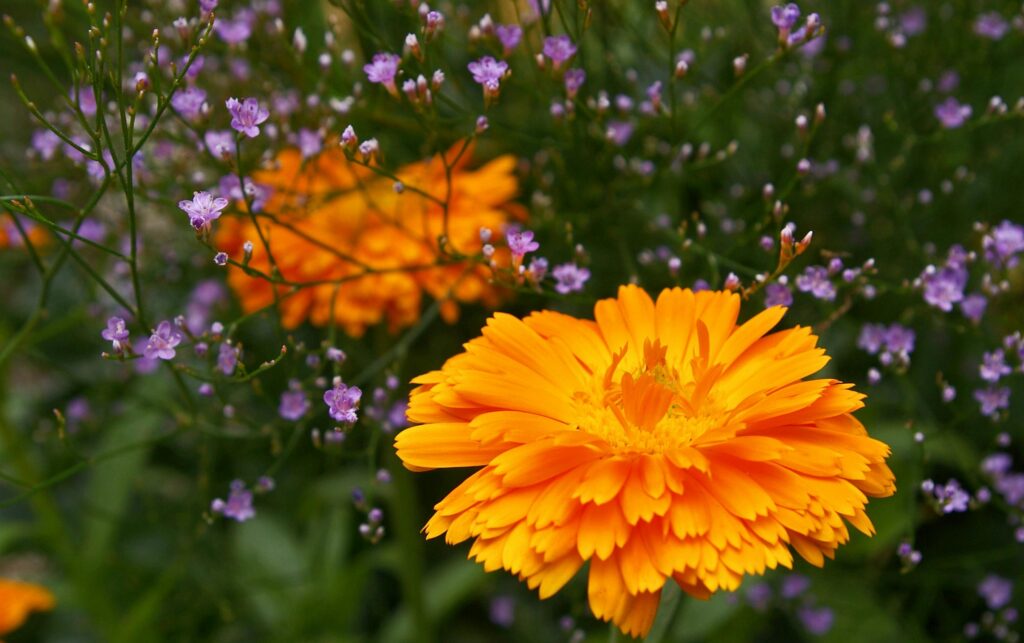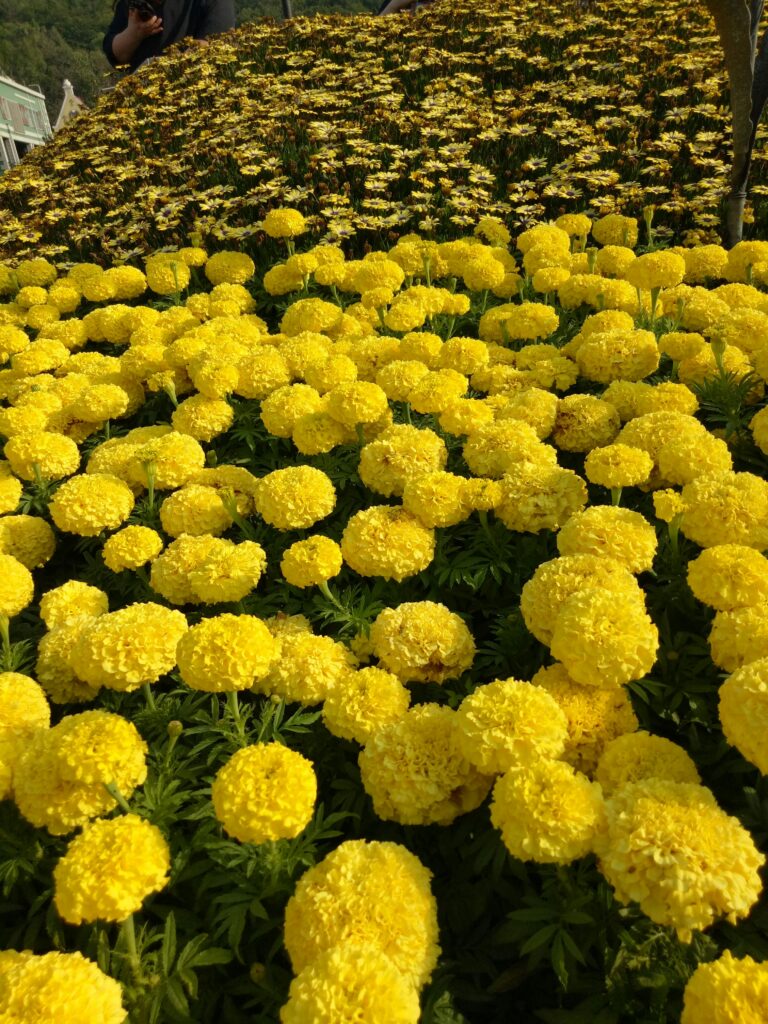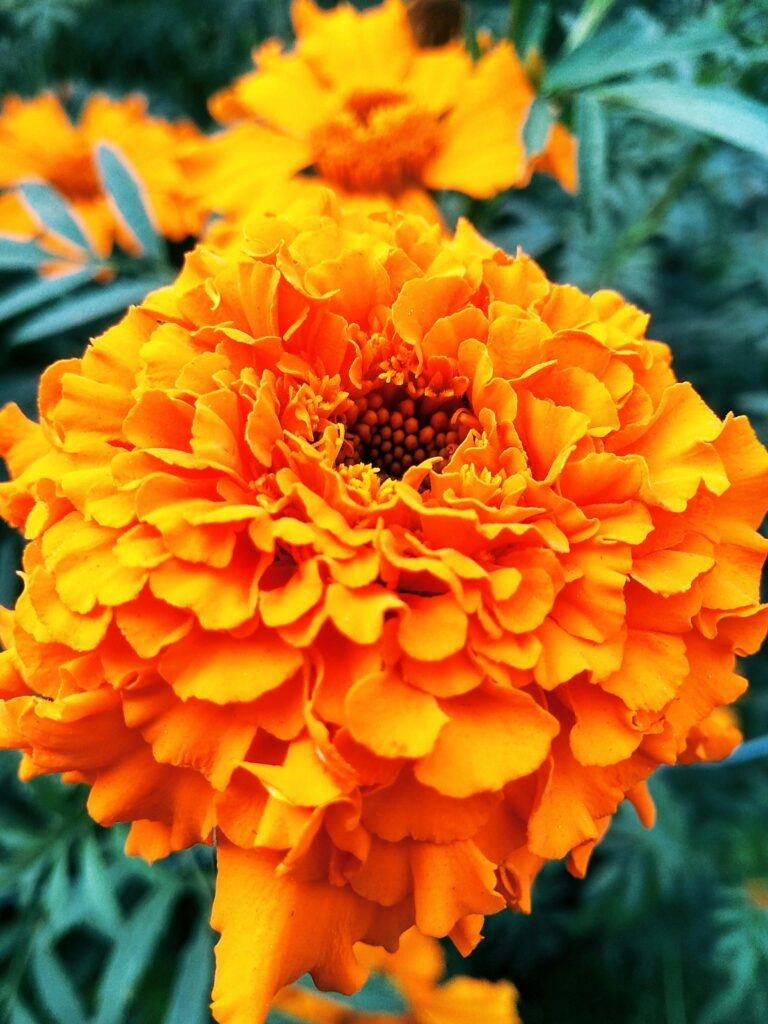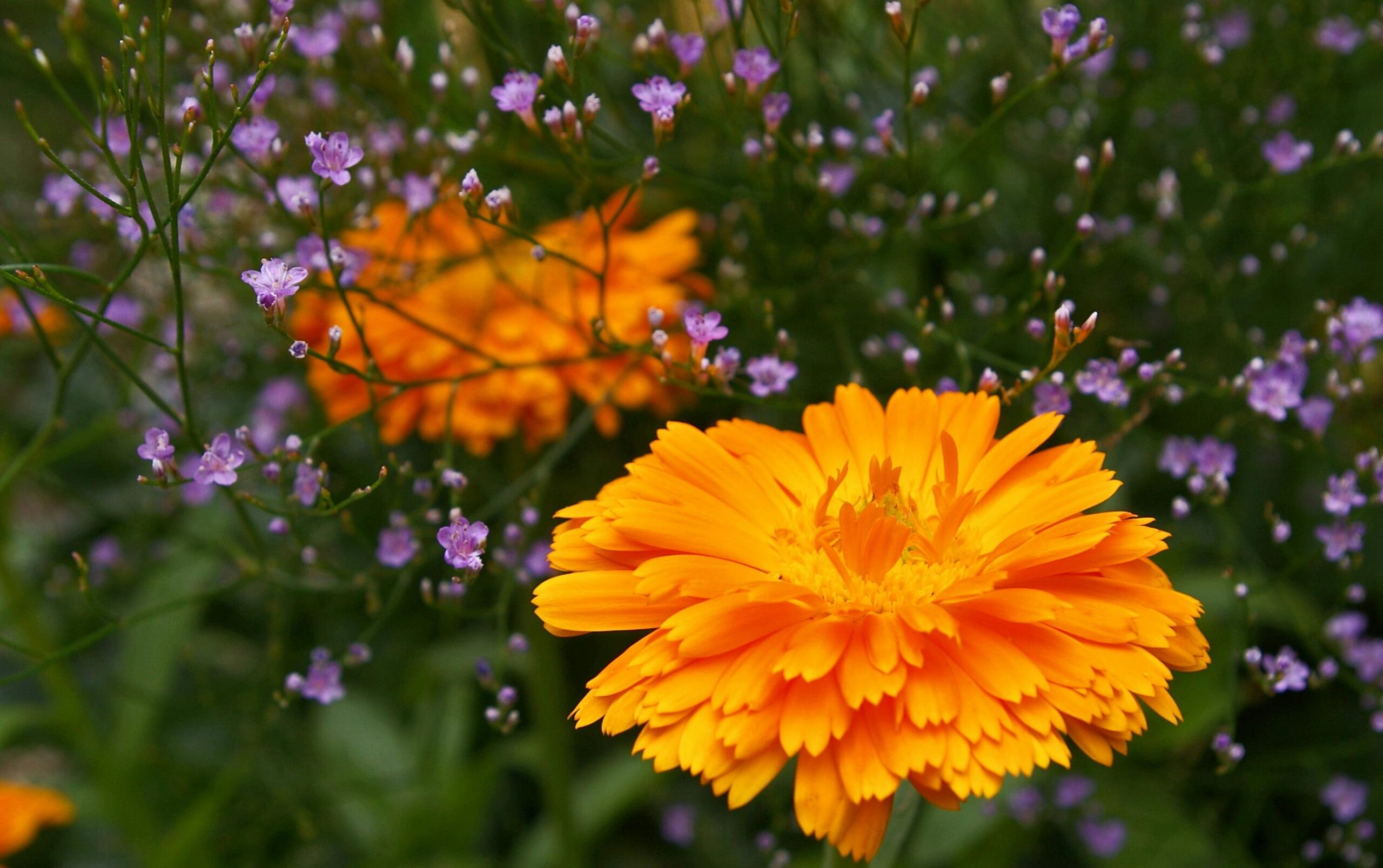
Marigold plants are one of the few flowers that can truly illuminate a garden. These happy blooms, sometimes referred to as the garden’s “golden charm,” add sunshine wherever they are planted. Marigolds have gained a special place in gardens all over the world because of their vivid orange and yellow petals, laid-back disposition, and profound cultural significance.
It is more than just plants; they are representations of happiness, fidelity, and tenacity found in backyard flower beds across America, sacred temples in India, and vibrant festivals in Mexico. Marigolds are a fantastic option for anyone looking to add more color to their collection, regardless of their level of gardening experience.
Table of Contents
A Flower That Captures Sunshine
Although they are native to the Americas, marigolds, which are members of the genus Tagetes, are now found all over the world. They resemble tiny suns scattered throughout a garden with their luminous hues of orange, gold, and fiery red. They are a gardener’s dream because of their long-lasting blooms, unique scent, and capacity to flourish in challenging environments.
They are sometimes referred to as “sunshine flowers,” and it makes sense. Marigolds add warmth and vitality to the landscape, even on gloomy days.
The Rich Symbolism of Marigold Plants
Marigolds aren’t just pretty—they are steeped in meaning and tradition.
- In Mexico, It is known as cempasúchil. During Día de los Muertos (Day of the Dead), their glowing petals are believed to guide the spirits of loved ones back to the world of the living. Streets, homes, and altars are covered with marigolds in this vibrant celebration of life and memory.
- In India, it symbolizes purity, prosperity, and devotion. They are an essential part of weddings, festivals, and religious ceremonies. Garlands made of marigolds decorate temples, homes, and even brides and grooms.
- In Europe: They were once called “Mary’s Gold” after the Virgin Mary, which is where their English name comes from.
- In Victorian flower language: Marigolds carried both joy and sorrow, representing the cycle of life, creativity, and remembrance.
This wide range of symbolism shows how deeply marigolds are woven into human culture. They’re not just flowers—they’re storytellers.

Why Marigolds Are Garden Favorites
Gardeners around the world adore marigolds, and it’s not just because of their beauty. These golden flowers bring plenty of benefits:
- Natural Pest Control
These are like little soldiers protecting your garden. Their strong scent repels pests like aphids, mosquitoes, and nematodes, making them the perfect companion plant for vegetables such as tomatoes and cucumbers. - Low Maintenance
Marigolds thrive in poor soil, full sun, and dry conditions. Even if you forget to water them now and then, they’ll still keep blooming. - Continuous Blooms
From early summer until the first frost, marigolds bloom nonstop. Few flowers can match their dedication. - Versatility
They’re equally beautiful in flower beds, borders, pots, or hanging baskets. Whether you have a large garden or a small balcony, marigolds fit right in. - Fast Growth
From seed to bloom, marigolds take as little as 45 days. If you’re impatient to see results, these are the flowers for you.
Different Types
There isn’t just one type of marigold. Here are the most popular varieties you can grow:
- African Marigolds (Tagetes erecta)
Tall, bold, and striking with large globe-shaped flowers. Perfect for creating a statement in garden beds. - French Marigolds (Tagetes patula)
Compact, bushy plants with smaller flowers. Great for borders, edges, and containers. - Signet Marigolds (Tagetes tenuifolia)
Delicate, with finely cut foliage and edible flowers. Their citrusy flavor makes them a fun addition to salads. - Hybrid Marigolds
Modern varieties are bred for unique colors, shapes, and extra resilience.
How to Grow Successfully
One of the reasons marigolds are called the golden charm is that they reward you with so much beauty for so little effort. Here’s a simple guide:
1. Choosing the Spot
Marigolds love full sun. Pick a location where they’ll get at least 6 hours of direct sunlight daily.
2. Soil Preparation
They grow in almost any soil, but well-drained, slightly sandy soil is best. Add compost for richer blooms.
3. Planting
- Sow seeds directly in the garden after the last frost.
- Space tall African marigolds about 10–12 inches apart.
- Space smaller French marigolds 6–8 inches apart.
4. Watering
Water regularly, but avoid soggy soil. Marigolds handle dry conditions better than wet feet.
5. Deadheading
Pinch off faded blooms to encourage fresh flowers and extend the blooming season.
6. Fertilizer
Marigolds don’t need much. Too much fertilizer leads to fewer flowers and more leaves. A light compost feed is enough.
Uses Beyond the Garden
Marigolds are not only pretty faces. They serve practical and cultural purposes too:
- Medicinal Uses: Extracts from marigolds are known for their anti-inflammatory and antibacterial properties. Calendula, a close relative, is used in creams for skin healing.
- Culinary Uses: Signet marigold petals are edible and add a splash of color to salads, cakes, and teas.
- Natural Dye: The petals can produce golden-yellow dyes, once used for fabrics and food coloring.
- Spiritual and Cultural Uses: From Hindu weddings to Mexican festivals, marigolds are flowers of celebration, memory, and devotion.

Fun Facts
- Marigolds were once used as a substitute for saffron in cooking, earning them the nickname “poor man’s saffron.”
- They bloom faster than most flowers, making them perfect for impatient gardeners.
- Their golden petals are said to symbolize the warmth of the sun and the cycles of life.
Tips to Style Your Garden with Marigolds
- Plant marigolds along borders to create a glowing golden frame around your garden.
- Mix African and French marigolds together for height variety and texture.
- Add them to vegetable gardens as natural pest protectors.
- Place pots of marigolds on porches and balconies to create a cheerful, sunny atmosphere.
The Golden Glow That Never Fades
Marigolds aren’t just flowers; they’re living symbols of happiness, resilience, and warmth. With their ability to thrive in tough conditions, protect other plants, and brighten up spaces, they embody the idea that beauty and strength can go hand in hand.
From sacred ceremonies to humble backyards, marigolds continue to spread their golden glow across the world. Their cheerful blooms remind us of the simple joys of life—the warmth of the sun, the cycles of nature, and the power of resilience.
So, if you’re looking to add a flower that combines beauty, practicality, and deep meaning, marigolds are the answer. They truly are the golden charm of every garden.
Conclusion
Marigolds are the garden’s golden charm, and they really do live up to their name. In addition to being beautiful flowers, they are hardy plants that safeguard your garden, improve your mood, and have profound spiritual and cultural significance. Marigolds are the type of flower that makes gardening feel fulfilling and joyful because of their low maintenance requirements, durable blooms, and vibrant colors.
It adds sunshine and happiness wherever they are grown, whether you plant them in pots, line them along walkways, or incorporate them into your vegetable patch. Their radiance serves as a reminder that sometimes the most impactful flowers are the most basic.
